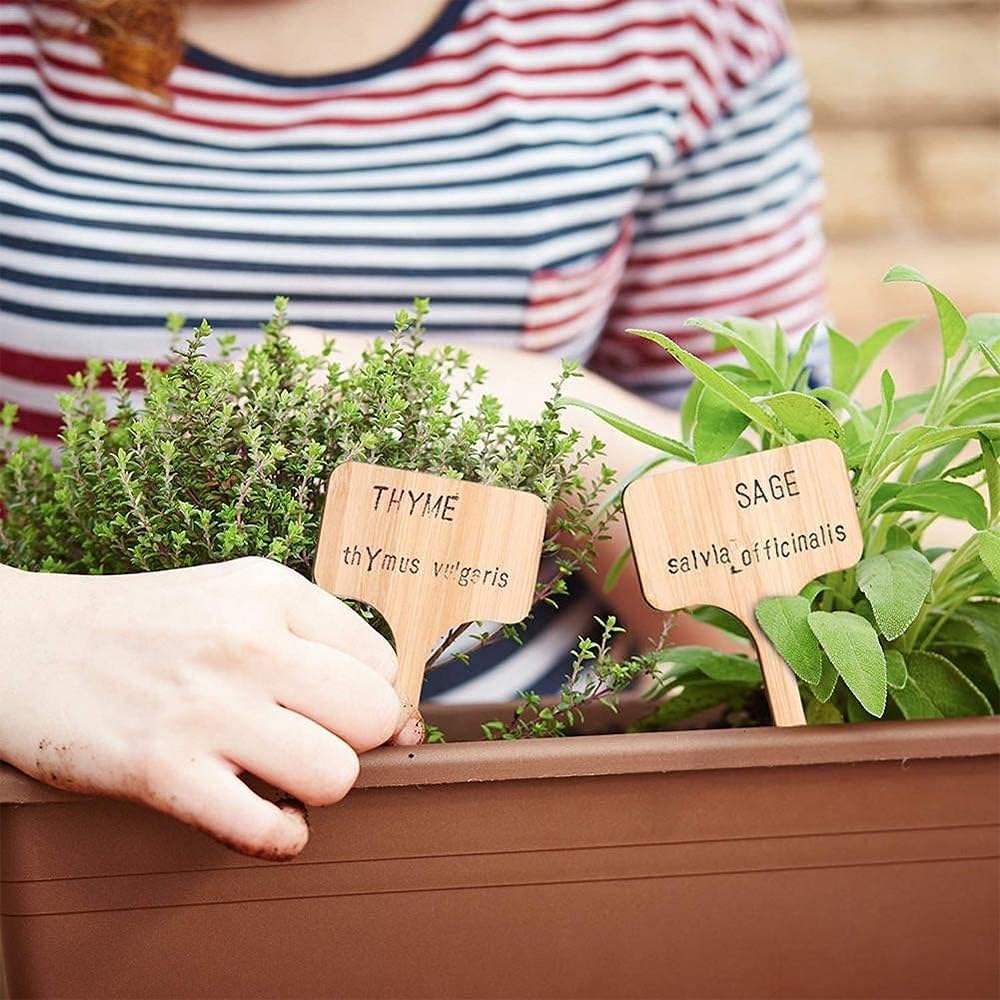
From Seed to Table: The Ultimate Guide to Vegetable Gardening with Bamboo Plant Labels
Share
From Seed to Table: The Ultimate Guide to Vegetable Gardening with Bamboo Plant Labels
Buy Plant Tags on Amazon
The Joy of Homegrown Veggies
There’s a certain satisfaction that comes from growing your own food. The crunch of a freshly picked carrot, the sweet burst of a ripe tomato, these are the joys that vegetable gardening can bring right to your kitchen table. Whether you’re a seasoned gardener or just starting out, the process of nurturing a garden is not just about producing food, but about connecting with nature. In this journey, it’s vital to be organized, eco-conscious, and efficient, all while fostering the passion for gardening that brought us there. That is why bamboo plant labels are a critical tool to have.

Why Choose Bamboo Plant Labels for Your Vegetable Garden?
In a world full of plastic solutions, it’s refreshing to embrace eco-friendly alternatives, and bamboo plant labels are a stellar example of this. These labels are crafted from 100% natural bamboo, a material that is both durable and environmentally conscious, offering a sustainable alternative to plastic markers. They are a testament to the idea that you don’t have to choose between function and sustainability—you can have both in your garden. Not only that, but bamboo itself adds a natural, organic feel to your vegetable garden.
The Practicality of Bamboo Plant Labels
Beyond sustainability, these bamboo labels are incredibly practical for any vegetable garden. Unlike plastic labels that can fade, crack, or become unreadable in the sun, bamboo labels have a smooth surface that makes writing incredibly easy with a marker pen. You don’t have to worry about your labels washing off in the rain or fading in the sun—they are designed to withstand the elements and maintain their legibility for the entire growing season. Each tag, measuring 10cm (3.94") in length and 6cm (2.36") in width, offers ample space for writing, ensuring that you don’t have to use some kind of plant code or get out a magnifying glass every time you enter your garden.
How to Use Bamboo Plant Labels in Your Vegetable Garden
Using bamboo plant labels in your vegetable garden is incredibly straightforward, but with some creative techniques you can use them to elevate your garden experience. Let's take a deeper look:
Seed Starting Organization
When starting your seeds indoors or in a greenhouse, bamboo plant labels can help you keep track of which seeds are which. Instead of trying to remember which seedling is which, you can mark the individual cells in your seed tray to organize and maintain your seedlings during the germination phase. This is particularly important when you are starting a variety of different vegetable species or cultivars.
Direct Sowing Identification
If you are direct sowing into your garden, these labels help mark the exact spot of your seeds. This can prevent accidentally disturbing the seedlings when working in the garden bed. Additionally, if you are direct sowing multiple different types of veggies, this can prevent mixing up different crops.

Cultivar and Variety Differentiation
For vegetable gardeners who love to experiment with different varieties of the same plant, like different types of tomatoes or peppers, these plant labels become indispensable. By noting down the specific variety, you can keep track of which ones perform best in your unique garden environment.
Succession Planting Schedules
Vegetable gardening often involves succession planting to ensure a continuous harvest throughout the season. Bamboo labels help track the sowing date of each crop, making it easier to time subsequent plantings and avoid having too many crops ripen all at once.
Companion Planting Identification
For those that incorporate companion planting, these labels can help identify specific plants to make sure everything is working as it should. These labels also prevent accidentally uprooting or disturbing your companion plants.
Marking Young Transplants
When transplanting seedlings into their final location, bamboo labels help make sure you know what is planted where as you begin to grow and organize your vegetable garden.
The Aesthetic of Bamboo Plant Labels
Beyond function, the beauty of bamboo plant labels is something that elevates your vegetable gardening experience to another level. Featuring a classic square shape, these plant labels add a rustic touch to your garden. These labels are not just functional, but an aesthetic element to your space. The natural wood goes perfectly with the greenery and vibrant vegetables of any vegetable garden, showing your commitment to both a practical and beautiful garden.
DIY Projects with Bamboo Plant Labels
The versatility of bamboo plant labels extends beyond marking plants. Here are some creative ideas you can explore:
Personalized Gifts
These labels can be personalized with special messages or designs to create meaningful gifts for gardening enthusiast friends and family members.
Garden Decor
Use bamboo plant labels to create charming garden decor. Paint them, add decorative elements, or use them to add charm to your veggie garden.
Classroom Activities
Bamboo plant labels are also excellent for educational purposes. They can be used for labeling classroom gardens, science experiments, and other creative projects.
Home Organization
Beyond gardening, they can help you organize your home! Mark herbs, spices, tools, and more.
A Sustainable Choice for a Thriving Vegetable Garden
Bamboo plant labels provide a great blend of practicality and sustainability. They are an excellent tool for anyone who cares about the environment and want to have the best possible vegetable garden.
Buy Plant Tags on Amazon
If you're ready to enhance your vegetable gardening experience with these versatile and eco-friendly bamboo plant labels, check them out today!